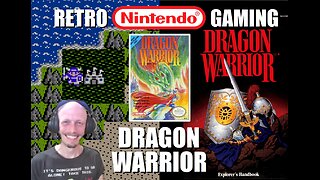Premium Only Content

Cyclaneusma needle cast disease | I'm trying to save my trees. #forest #disease
Cyclaneusma needle cast disease is very destructive too trees.In this video, we will be discussing Cyclaneusma needle cast disease, a fungal disease that affects conifers such as pine, spruce, and Douglas fir. This disease can cause significant damage to these trees, leading to defoliation and even death if left untreated.
We will start by discussing the symptoms of Cyclaneusma needle cast disease, which include yellowing and browning of needles, followed by their premature dropping. We will also talk about how this disease spreads and what conditions promote its growth.
Next, we will delve into the biology of the fungus responsible for Cyclaneusma needle cast disease, including its life cycle and how it infects trees. We will also discuss the different management options available to control this disease, including cultural practices, fungicide applications, and tree removal in severe cases.
Throughout the video, we will provide visual aids such as photos and diagrams to help viewers understand the disease and its effects on conifers. We will also provide tips on how to prevent and manage Cyclaneusma needle cast disease, as well as resources for further reading.
Whether you're a homeowner, landscaper, or forestry professional, this video will provide valuable information on how to identify, prevent, and manage Cyclaneusma needle cast disease in your trees.
This disease is the most common and most destructive needle cast in fir. It severely defoliates seedlings and young trees, reduces their growth, and may sometimes kill them. In larger trees, however, the damage does not cause any serious problems. The current year's needles are infected first, but they do not show any damage. The following spring, brown spots appear and spread, eventually covering the entire surface of the needles by mid-summer. The first fruiting bodies form on the upper surface of the needles and discharge spores in late summer or early fall. It is unclear just what role these spores play, but they may give rise to the second type of spores. Ascospores form in mid-summer on the needles infected two years earlier. Hysterothecia, the fruiting bodies bearing these spores, create a black line on the underside of the needles. This line is actually the ascus, which will release ascospores able to infect new shoots the following spring. Taken from
-
 LIVE
LIVE
BrightGaming
1 hour agoDragon Warrior 1 (NES): Defeat the DragonLord & Save the Kingdom as Erdrick's Heir with BrightGaming
803 watching -
 19:15
19:15
Stephen Gardner
18 hours ago🟢YES! Trump did it! + Elon Musk DROPS BOMBSHELL on Democrat Party!
110K217 -
 29:24
29:24
Afshin Rattansi's Going Underground
1 day agoEx-CIA Advisor & Afshin Rattansi Have HEATED Exchange Over Ukraine Proxy War
3.21K35 -
 1:06:17
1:06:17
Mike Rowe
20 hours agoThe Mastermind Behind THIS Radical Idea At WSU Tech | Sheree Utash #448 | The Way I Heard It
93.6K17 -
 1:29:13
1:29:13
I_Came_With_Fire_Podcast
13 hours agoAncient Egypt's Tech & the Secret Temples of Malta
17.2K2 -
 LIVE
LIVE
GritsGG
3 hours agoWin Streaking! Most Wins 3499+ 🧠
109 watching -
 DVR
DVR
Bannons War Room
6 months agoWarRoom Live
34.1M8K -
 LIVE
LIVE
ttvglamourx
3 hours ago $1.01 earnedPLAYING WITH VIEWERS !DISCORD
88 watching -
 1:21:38
1:21:38
VapinGamers
3 hours ago $1.95 earnedTools of the Trade - EP04 Of Thumbnails and Titles, What's Important? - !rumbot !music
23.5K1 -
![Mr & Mrs X - [DS] Trafficking Empire – How Epstein Built His Web of Wealth and Deceit:Part 1 - Ep 5](https://1a-1791.com/video/fww1/f0/s8/1/o/k/J/d/okJdz.0kob-small-Mr-and-Mrs-X-DS-Trafficking.jpg) 52:11
52:11
X22 Report
5 hours agoMr & Mrs X - [DS] Trafficking Empire – How Epstein Built His Web of Wealth and Deceit:Part 1 - Ep 5
88.1K25